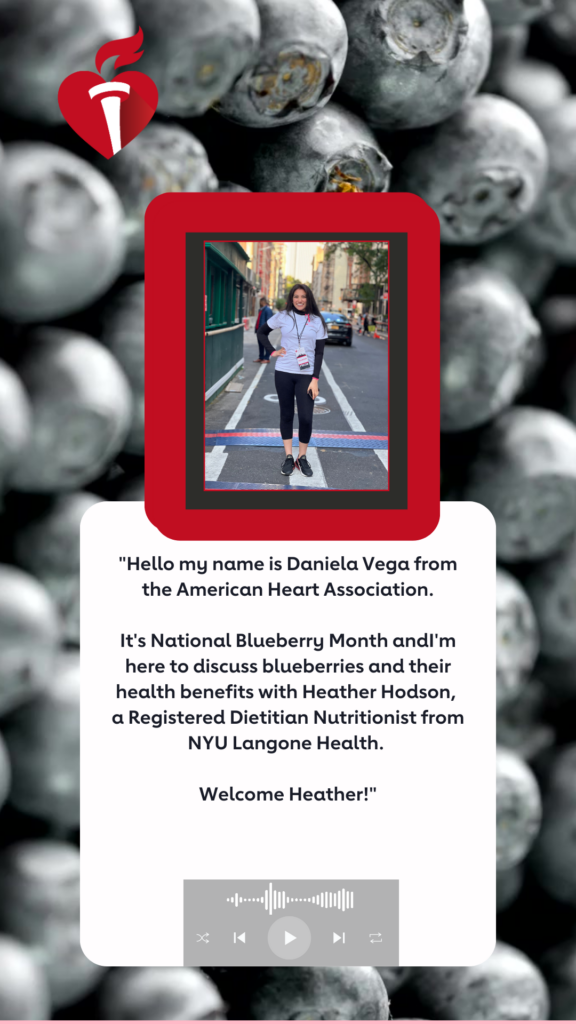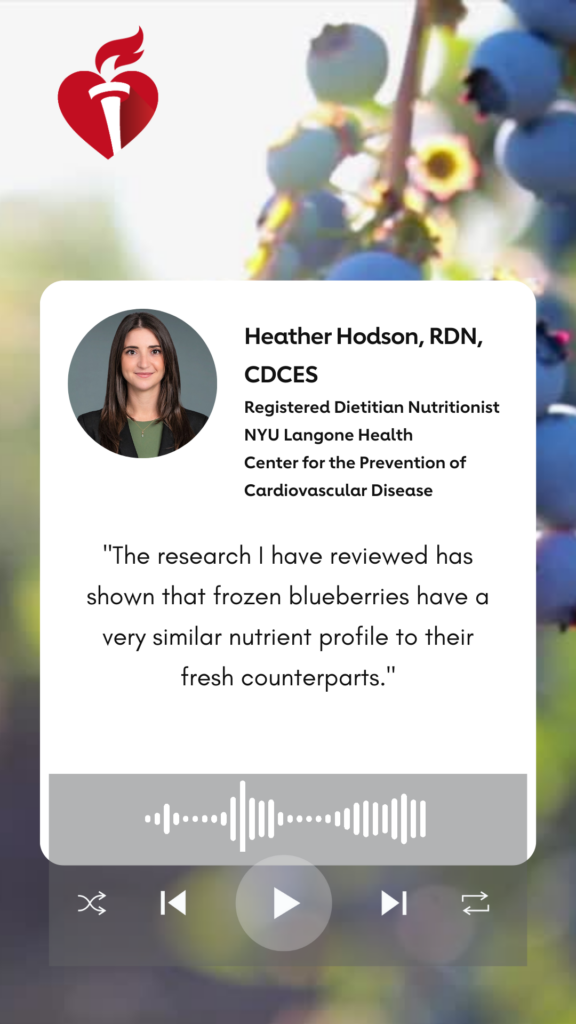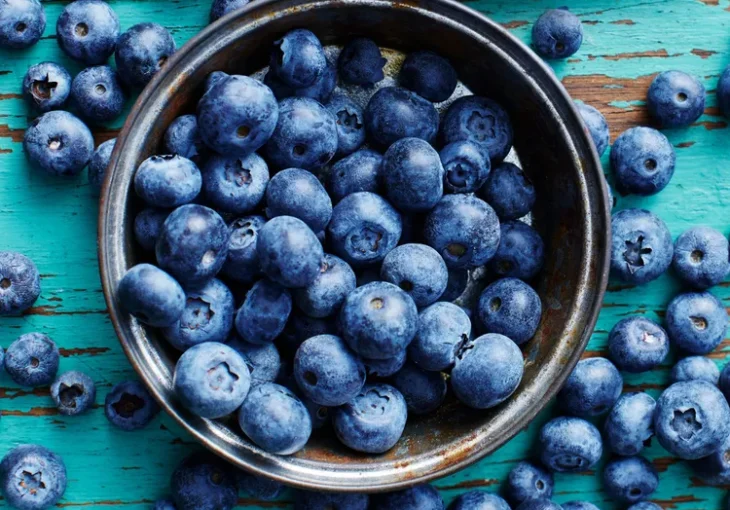Blueberry Mango Smoothie, Blueberry Muffins, and Blueberry Pancakes; all delicacies that have one thing in common- blueberries.
July is National Blueberry Month and in honor of this celebration, Daniela Vega, our NYC Intern of Impact, spoke to Heather Hodson, RDN, CDCES from NYU Langone Health, about its health benefits.
This staple summer fruit is packed with nutrients that help keep the body strong and heart healthy; some of which include vitamin C, vitamin K, mineral manganese, anthocyanins, fiber, and many more.
As part of a healthy dietary pattern, blueberries play a key role in helping reduce your risk for cardiovascular disease.
The antioxidant nutrient found in blueberries (anthocyanins) and other blue/purple pigmented foods “helps lower the oxidative stress in our bodies, which in turn, physiologically can help lower blood pressure,” says Hodson.
One of the most important components of a heart healthy diet is increasing your fiber intake; a healthy gut microbiome that can help reduce chronic inflammation. By adding blueberries to your diet, you can reduce the risk of high cholesterol and heart disease. According to Hodson, most men and women can benefit from consuming between 30-38g fiber/day and 25-35g fiber/day, respectively. Needs may vary based on certain medical conditions, so she encourages individuals to talk to their doctor or dietitian about their specific fiber goals.
While eating blueberries of any kind is great, it is important to understand the amount of nutrients that are present in the way you eat them. Evidence has been found that the nutrient content of the fruit decreases when cooked because of the heat. Therefore, when making baked goods, Hodson recommends trying to cook them for less time, if possible. However, it would be ideal if you can eat the berries fresh or frozen.
Personally, blueberries are my favorite, but there are some who prefer not to eat them. When asked about possible alternatives for picky eaters to maximize their nutrient count, Hodson said fruits such as raspberries, strawberries, and blackberries offer great sources of fiber and anthocyanins.
“If you are looking for some of the similar anthocyanins and nutrient components- looking for those blue/purple fruits and vegetables such as plums, eggplant or red cabbage are another way to get that,” says Hodson.
Summer is a great time to eat blueberries and other berries because they are in-season. Eating foods that are in-season means you are eating them at their highest nutritional value and peak flavor.
For more heart health resources, news and recipes, visit recipes.heart.org
Click on the images below to listen to clips from my interview with Heather Hodson:
Clip 1: Reducing the CVD risk |
Clip 2: Fresh versus frozen |

